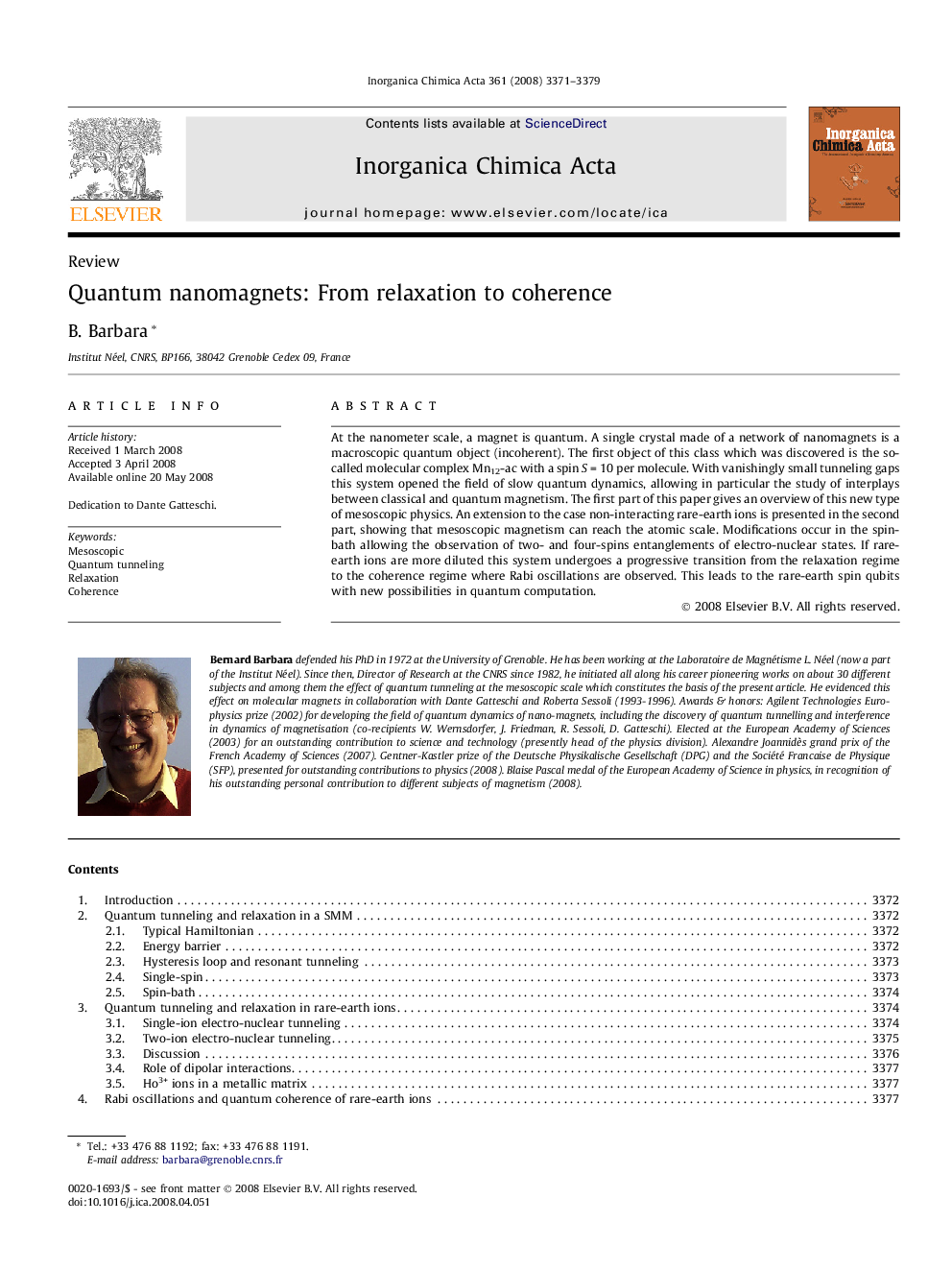| Article ID | Journal | Published Year | Pages | File Type |
|---|---|---|---|---|
| 1311511 | Inorganica Chimica Acta | 2008 | 9 Pages |
At the nanometer scale, a magnet is quantum. A single crystal made of a network of nanomagnets is a macroscopic quantum object (incoherent). The first object of this class which was discovered is the so-called molecular complex Mn12-ac with a spin S = 10 per molecule. With vanishingly small tunneling gaps this system opened the field of slow quantum dynamics, allowing in particular the study of interplays between classical and quantum magnetism. The first part of this paper gives an overview of this new type of mesoscopic physics. An extension to the case non-interacting rare-earth ions is presented in the second part, showing that mesoscopic magnetism can reach the atomic scale. Modifications occur in the spin-bath allowing the observation of two- and four-spins entanglements of electro-nuclear states. If rare-earth ions are more diluted this system undergoes a progressive transition from the relaxation regime to the coherence regime where Rabi oscillations are observed. This leads to the rare-earth spin qubits with new possibilities in quantum computation.
Graphical abstractThis paper gives an overview of a new type of mesoscopic physics dealing with nanomagnets. A single crystal made of a network of nanomagnets is a “macroscopic quantum magnet” whose magnetization can be reversed by “mesoscopic quantum tunnelling”. The first object of this class which was discovered is the so-called molecular complex Mn12-ac with a spin S = 10 per molecule. An extension to the case Rare-Earth ions shows that mesoscopic magnetism can reach the atomic scale. In this case it is shown how nuclear spins drive quantum effects at the mesoscopic scale. At lower dilutions slow quantum relaxation gives way to fast quantum coherence opening new possibilities in quantum computation.Figure optionsDownload full-size imageDownload as PowerPoint slide
